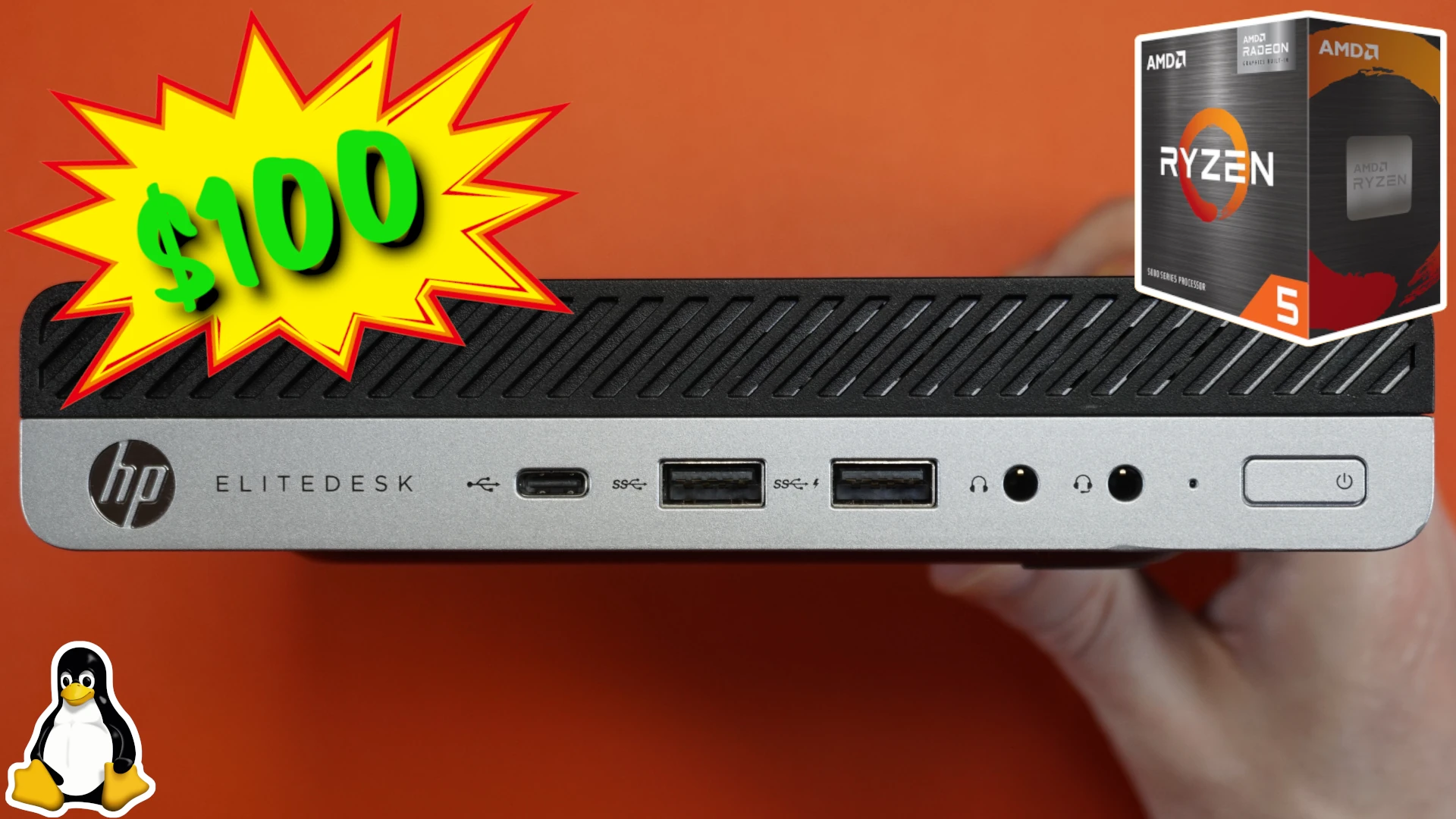Sparkle managed to cram an Intel Arc A310 into a 50W package. This got me interested in seeing what it would take to set up AV1 encoding on Linux. But first, we must battle the low-profile bracket mini-boss.
DEBOXING
In the box, you’ll find the GPU and a complimentary low-profile bracket. That’s it.




LOW-PROFILE BRACKET INSTALLATION
Need to install the low-profile bracket? Grab some paper towels and thermal paste! That’s right, one of the three screws needed to remove the preinstalled bracket is located under the cooler.
Maybe I’m having a senior moment and someone in the comments will tell me I’m an idiot, and on an unrelated note, point out a simpler way to remove the screw?
And yes, working around Sparkle’s Audi-level engineering will void your warranty sticker.




DRIVERS
Like AMD’s, Intel’s binary drivers are a hot mess, but have the added benefit of only being compatible with one Linux distribution. The last update for these drivers was way back in 2023, and you should set your expectations accordingly.
And no, Arc™ Control is Windows only because reasons.
Fortunately, using the open-source drivers is a breeze. All you need is a recent kernel and Mesa version.
I installed the following packages on Debian Testing.
sudo apt install intel-media-va-driver-non-free firmware-linux-nonfree intel-opencl-icd mesa-vulkan-driversUpdated to the latest firmware.
git clone https://github.com/intel-gpu/intel-gpu-firmware.gitcd intel-gpu-firmwaresudo mkdir -p /lib/firmware/updates/i915/sudo cp firmware/*.bin /lib/firmware/updates/i915/sudo update-initramfs -u -k allAnd added the user to the render group.
sudo gpasswd -a ${USER} renderUTILITIES
The closest thing to a monitoring option I found was a two-script setup called Intel Arc Monitor. One script provides basic information, while the other offers a more comprehensive view – unfortunately, neither includes fan control.

The lack of fan control for ARC GPUs under Linux is a significant drawback. Under load, the Sparkle A310 ECO sounds exactly like how you would imagine a single-slot, low-profile GPU with a blower fan would sound.
At idle, the Sparkle A310 ECO undergoes an unending off-on cycle that will render you clinically insane after 20 minutes. Fortunately, Sparkle plans to fix this in a future update.

OBS AV1
The A310 flawlessly encoded video in OBS using the VAAPI AV1 encoder. It even functioned as an AV1 add-in with an NVIDIA system.



Here’s some sample of footage captured using VAAPI 264, VAAPI AV1, and X264 at 1080p60 with a 6,000-bitrate.
This isn’t a quality comparison, but rather a demonstration of functionality across different encoders.




BLENDER
I tried three versions of Blender and surprisingly, it wasn’t having any of it. Even after installing oneAPI and intel compute stack.

DAVINCI RESOLVE
Welcome to the “would have lost that bet” segment!
DaVinci Resolve started right up with A310, even utilizing OpenCL for GPU processing. My excitement was short-lived, though. Exiting the cut page caused Resolve to freeze right the hell up.
Maybe next time 🙁

HANDBRAKE
AV1 encoding worked out of the box using the Handbrake Nightly Flatpak.

The following chart shows the results from encoding a 1080p/60 clip using AV1 SVT (AMD 5600G CPU) and AV1 QSV (Intel ARC A310 GPU).
Lower is better, unless you’re getting paid by the hour.
BENCHMARKS?
The A310 isn’t designed for gaming, but I wanted to see how it stacked up against the integrated graphics in my 5600G. These benchmarks are less about raw performance and more about basic functionality.
No 1% lows, no multiple resolutions, just good old-fashioned average frame rate.
Superposition
Furmark
Talos Principal
Shadow Of The Tomb Raider
Cyberpunk
TESTBENCH
| CPU | AMD Ryzen 5600G |
| RAM | Corsair Vengeance LPX 16GB |
| Motherboard | MSI B550M PRO-VDH |
| GPU | NA |
| Storage | Silicon Power 256GB NVMe |
| PSU: | EVGA 600 B1 |
| Firewire: | StarTech PEX1394B3 |
| Network: | Mellanox MCX311A-XCAT CX311A |
| OS: | Debian Testing |
| Kernel: | 6.8 RT |
| Mesa: | 23 |
SPECIFICATIONS
- Graphics Clock: 1000 MHz
- Xe-Core: 6
- Ray Tracing Units: 6
- Intel® XMX Engines: 96
- Xe Vector Engines: 96
- Memory Size: 4GB GDDR6
- Graphics Memory Interface: 64 bit
- Graphics Memory Bandwidth: 124 GB/s
- Graphics Memory Speed: 15.5Gbps
- PCI Express Configurations: PCI Express 4.0 x8
- TBP: 50 Watt
- 2x Mini DisplayPort (Max): 7680 x 4320@60Hz
- 1x HDMI 2.0b (Max): 4096 x 2160@60Hz
VERDICT
The A310 ECO offers a valuable function but lacks refinement. While the gaming performance is negligible, the real draw of this card lies in its AV1 encoding capabilities. Unfortunately, the shouty blower fan makes it unsuitable for desktop use.
Here’s a suggestion for Sparkle: focus solely on the AV1 encoding functionality. Remove the video outputs entirely, and implement passive cooling for silent operation.
When Twitch and YouTube finish rolling out AV1 ingest, the first company to make an AV1 add-in card is going to make a lot of money.
A streamlined version of the A310 ECO, optimized for AV1 encoding, could be a hit among streamers and media encoding enthusiasts.
SPARKLE Intel Arc A310 ECO

The A310 ECO offers a valuable function but lacks refinement.
Pros
Open-source drivers
Good price
Smol
Cons
Warranty voiding low-profile bracket
LOUD
Some posts contain affiliate links. If you click on an affiliate link and later make a purchase, I may receive a small commission. Money earned via affiliate links helps to keep this site up and running.
Have questions about your Linux setup? Ask in our forums.




I’m glad I was not the only one that had the constant fan throttle up/down problem. Pretty annoying noise-wise. Hopefully it gets updated in their firmware soon.
That’s just how they run out of the box. Yeah, hope the eventual update fixes the issue. Didn’t see any video reviews bring up how loud the little critter is in general.